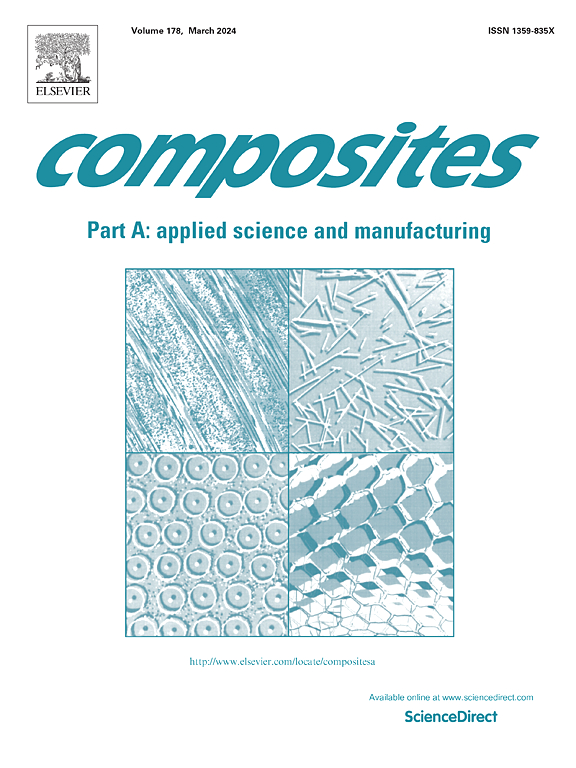Influence of functionalized h-BN particle interphase and interface regulation with structural design on the directional thermal conductivity and mechanical performance of carbon fiber/epoxy composites
IF 8.1
2区 材料科学
Q1 ENGINEERING, MANUFACTURING
Composites Part A: Applied Science and Manufacturing
Pub Date : 2025-01-10
DOI:10.1016/j.compositesa.2025.108708
引用次数: 0
Abstract
This study highlights the importance of interfacial adhesion between carbon fiber (CF) and the epoxy matrix by adopting a novel approach that combines untreated and silane-treated h-BN in a multilayered structure. The interface was engineered by electrospraying h-BN particles, while the interphase was modified by incorporating up to 20 % h-BN into the epoxy matrix. The highest out-of-plane thermal conductivity of 2.31 W/mK, a 116 % increase compared to the reference value of 1.07 W/mK, was achieved by sizing CF with silanized h-BN through electrospraying, in conjunction with the 20 % h-BN-loaded epoxy matrix. Conversely, the incorporation of h-BN in the epoxy alone resulted in the best mechanical performance, with approximately a 46.4 % increase in elastic modulus, a 105 % improvement in flexural modulus, and a nearly 5 % increase in Charpy impact strength. Based on CT scan results, the resizing of CF fabrics improved directional thermal conductivity in CF/epoxy composites with controlled porosity.
求助全文
约1分钟内获得全文
求助全文
来源期刊

Composites Part A: Applied Science and Manufacturing
工程技术-材料科学:复合
CiteScore
15.20
自引率
5.70%
发文量
492
审稿时长
30 days
期刊介绍:
Composites Part A: Applied Science and Manufacturing is a comprehensive journal that publishes original research papers, review articles, case studies, short communications, and letters covering various aspects of composite materials science and technology. This includes fibrous and particulate reinforcements in polymeric, metallic, and ceramic matrices, as well as 'natural' composites like wood and biological materials. The journal addresses topics such as properties, design, and manufacture of reinforcing fibers and particles, novel architectures and concepts, multifunctional composites, advancements in fabrication and processing, manufacturing science, process modeling, experimental mechanics, microstructural characterization, interfaces, prediction and measurement of mechanical, physical, and chemical behavior, and performance in service. Additionally, articles on economic and commercial aspects, design, and case studies are welcomed. All submissions undergo rigorous peer review to ensure they contribute significantly and innovatively, maintaining high standards for content and presentation. The editorial team aims to expedite the review process for prompt publication.
 求助内容:
求助内容: 应助结果提醒方式:
应助结果提醒方式:


